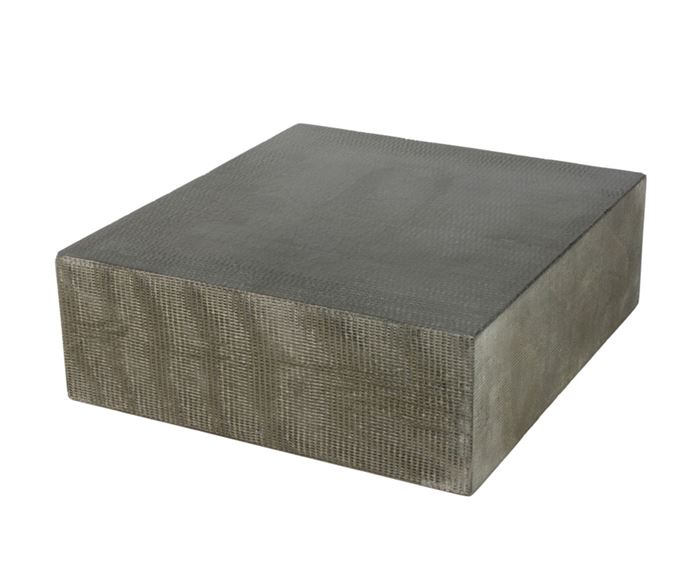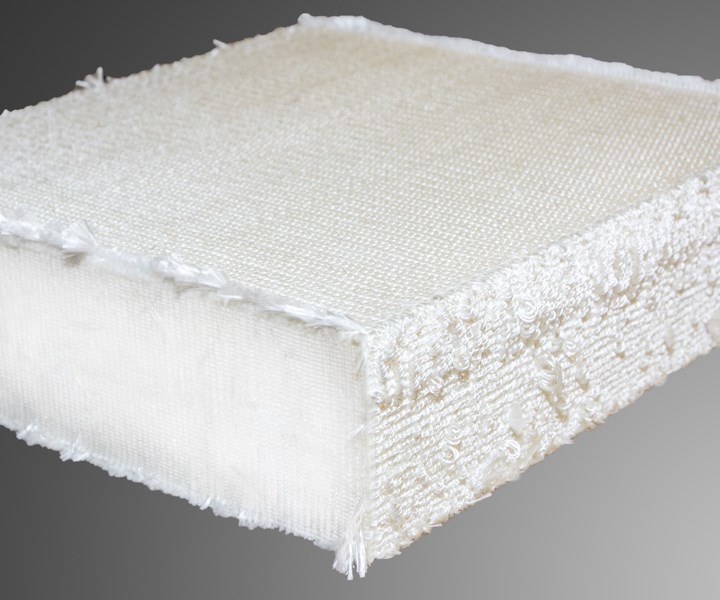Bally Ribbon Mills technology features infusion for 3D woven joints
Woven fabrics manufacturer Bally Ribbon Mills is highlighting its film infusion capabilities for 3D woven joints woven thermal protection systems and more.
Editor’s note: CompositesWorld received several new product and technology announcements ahead of JEC World 2020, which had been scheduled for March 3-5. Although that exhibition was postponed to May, CW is now publishing the announcements we received. This is one of them.
Woven fabrics manufacturer Bally Ribbon Mills (BRM, Los Angeles, Calif., U.S.) is highlighting its film infusion capabilities for 3D woven joints; woven thermal protection systems (TPS); and advanced woven composite 3D structures, including 3D near-net shapes.
In BRM’s film infusion process, a frozen sheet or film of resin is infused onto the custom 3D woven joint. Film-infused 3D woven joints ship as pre-made assemblies. BRM’s 3D continuous weaving process can be used fabricate complex shapes such as “Pi – π,” double “T,” “H.”
BRM’s complex woven structures are used primarily in aerospace applications, often in airframe structural components and subassemblies including stiffeners and joints. In addition, BRM has implemented innovative weaving technologies to develop complex webbing for aerospace products. The woven TPS billet to be showcased at the booth is part of a line of products that was selected as the critical component of the heat shield on the Orion Crew Capsule, which helps protect against the extreme temperatures of atmospheric re-entry.
Using a multi-dimensional continuous weaving method, BRM produces textiles that can be fabricated into near net-shape structures. These advanced weaving capabilities offer customers new solutions that reduce weight and cost. The technology weaves complex shapes automatically, eliminating many costly, time-consuming, and labor-intensive processes.
At its JEC World 2020 booth, BRM is displaying lightweight materials like 3D woven fabrics, and is presenting its multifunctional thermal protection systems (TPS) for atmospheric re-entry. Also on display are lightweight, cost-effective, advanced woven 2D and 3D composite structures.
Related Content
-
Plant tour: Spirit AeroSystems, Belfast, Northern Ireland, U.K.
Purpose-built facility employs resin transfer infusion (RTI) and assembly technology to manufacture today’s composite A220 wings, and prepares for future new programs and production ramp-ups.
-
A new era for ceramic matrix composites
CMC is expanding, with new fiber production in Europe, faster processes and higher temperature materials enabling applications for industry, hypersonics and New Space.
-
PEEK vs. PEKK vs. PAEK and continuous compression molding
Suppliers of thermoplastics and carbon fiber chime in regarding PEEK vs. PEKK, and now PAEK, as well as in-situ consolidation — the supply chain for thermoplastic tape composites continues to evolve.

.jpg;width=70;height=70;mode=crop)

















